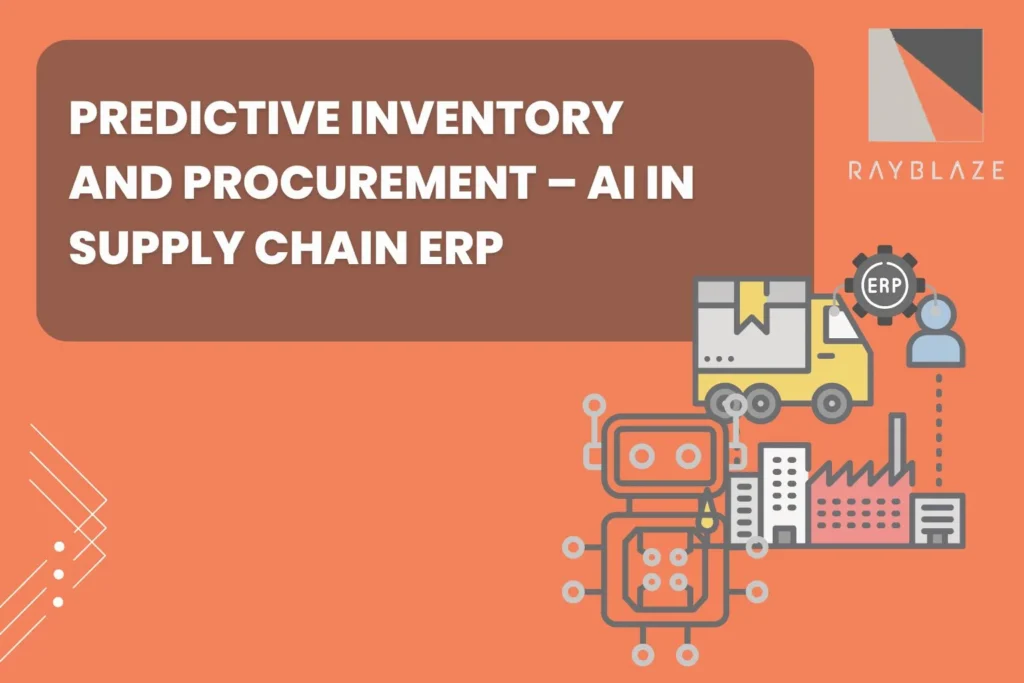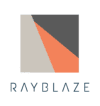
By Rayblaze Global Private Limited
AI + ERP Series | Day 4 of 7
Introduction: From Reactive to Predictive – The New Supply Chain Imperative
In today’s volatile market conditions, traditional ERP-driven supply chains—designed for control and standardization—are struggling to keep up with demand shifts, supplier disruptions, and inventory blind spots.
What’s missing?
Real-time intelligence.
By embedding AI into supply chain ERP modules, businesses can move from reactive decision-making to predictive, adaptive supply operations—avoiding shortages, overstock, and last-minute fire drills.
In this blog, we explore how AI is reinventing inventory planning, procurement, and supplier management inside modern ERP ecosystems.
What Traditional Supply Chain ERPs Lack
- Forecasting demand accurately
- Responding to supplier delays or price fluctuations
- Managing optimal stock levels across distributed locations
- Prioritizing purchase orders dynamically
- Detecting quality or delivery risks early
Most decisions are still rule-based or reliant on static, historic data.
How AI Powers Smarter Supply Chains
Demand Forecasting
- Use machine learning models to analyze multi-year sales, seasonality, regional demand, promotions, and external signals
- Predict weekly/monthly SKU-level demand with >90% accuracy
- Adjust forecasts dynamically as new data arrives
Dynamic Inventory Optimization
- Recommend reorder points based on forecast + lead time + buffer variability
- Classify SKUs using ABC analysis + ML-based velocity scoring
- Identify slow movers, dead stock, and potential shortages in advance
Intelligent Procurement Planning
- Prioritize POs based on urgency, risk, or price opportunity
- Suggest bundling or splitting orders across suppliers
- Flag potential cost savings through early payment or alternate sourcing
Invoice & GRN Matching via OCR
- Use computer vision to extract data from GRNs and invoices
- Auto-match with PO line items
- Reduce reconciliation errors and processing time
Supplier Risk Prediction
- Score vendors based on delivery consistency, lead time volatility, and complaint ratio
- Predict delay likelihood using previous performance + external factors (weather, strikes, etc.)
Example: Predictive Reordering Workflow
- ML model forecasts item X will run out in 14 days
- System checks lead time (10 days) and safety stock buffer
- Reorder suggestion auto-generated and sent for review
- If auto-approved, PO is raised and shared with preferred vendor
- AI bot tracks delivery milestone updates in real-time
Result: Zero stockout, just-in-time procurement, and reduced manual intervention.
Key Technologies and Models
- Forecasting Models: ARIMA, Prophet, LSTM, Facebook NeuralProphet
- Inventory Clustering: K-Means, DBSCAN
- Computer Vision: Tesseract, PaddleOCR, LayoutLM
- Anomaly Detection: Isolation Forest, One-Class SVM
- Tech Stack: Integration with Odoo, SAP, Oracle, or Laravel-based ERP via REST APIs
Tangible Business Gains
- 25–40% improvement in forecast accuracy
- 30% reduction in excess inventory
- 20% faster PO cycle time
- 15% increase in on-time supplier performance
These benefits directly impact working capital, service level, and customer satisfaction.
A Smarter Chain Is a Stronger Chain
AI doesn’t just streamline your supply chain—it makes it resilient. In a world of uncertainty, the companies that can see around the corner will outperform those reacting too late.
We help ERP-driven businesses build supply chains that learn, adapt, and optimize continuously—no matter the scale.
